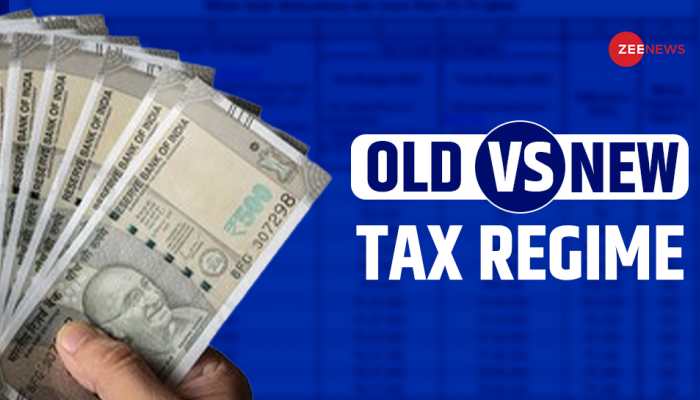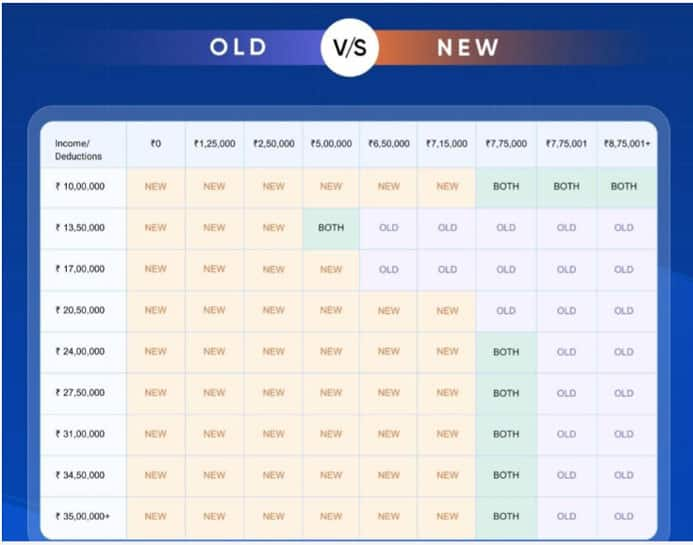New Tax Regime Vs Old Tax Regime -- Is Old Regime Still Beneficial For Those Earning Above Rs 12.75 Lakh Yearly? Expert Explains
Here’s a table showing a comparison of old vs new regime with the income level and deductions. If you have deductions more than Rs 7,75,000, then you can file return under old regime, explains Cleartax.
Trending Photos
)
New Delhi: Finance Minister Nirmala Sitharaman on 13 February 2025 tabled the Income-Tax Bill 2025 in Parliament. The new Income-Tax Bill replacing the Income-tax Act, 1961 marks a significant step toward simplifying the language and structure of the Income-tax Act.
A significant aspect of the Bill is the elimination of the concepts of "previous year" and "assessment year".
As a taxpayer had to track two different periods, it presented difficulties in complying with the provisions of the Act, especially for a new taxpayer who had to keep track of "previous year", "assessment year" as well as the "financial year".
Commenting on the same, Income tax returns e-filing website ClearTax told Zee News, the concept of a "tax year" in the Income Tax Bill 2025 is introduced to simplify the Indian tax framework by removing the historical complexity of the "financial year" and "assessment year." The "tax year" will be a 12-month period that begins on April 1st and ends on March 31st of the following year. This alignment means that all income earned during this period will be assessed in the same period, simplifying tax planning and compliance for individuals and businesses alike.
For newly established businesses or professional practices, the tax year will start from the date of establishment and run until the end of the financial year, making it easier for new entities to comply with tax regulations from day one. Similarly, if a new source of income arises during the year, the tax year for that particular income will start from the date the income source is initiated.
Cleartax also applauded FM's decision to raise the no-tax limit from Rs 7 lakh to Rs 12 lakh in the recently concluded Budget 2025.
By raising the no-tax threshold from Rs 7 lakh to Rs 12 lakh, the middle class will see a significant reduction in their tax liability. This increase in the threshold means that income up to ₹12 lakh is tax -free on account of rebate of Rs 60,000, effectively increasing disposable income for middle-income earners. This additional disposable income could be redirected towards increased consumption, savings, or investments, potentially stimulating economic activity and personal financial growth, it added.
For example, consider an income of Rs 15,00,000. Under the new tax regime, the tax liability would be Rs 1,09,200, reflecting the revised rates. This represents a decrease from the previous tax liability of Rs 1,45,600, calculated under the pre-budget rates. This adjustment results in a tax savings of Rs 36,400 for the taxpayer.
"However, the revised tax regime favors incomes up to Rs 12 lakh, but for those earning above Rs 12.75 lakh, staying in the old regime might still be beneficial if they invest heavily in tax-saving instruments," said Cleartax.
For individuals earning above Rs 12.75 lakh, the choice between the new and old tax regimes depends heavily on their investment in tax-saving instruments. In scenarios where significant investments are made in such instruments, the old regime may still prove beneficial due to its allowance for various deductions and exemptions, which are absent in the new regime.
Here’s a table showing a comparison of old vs new regime with the income level and deductions. If you have deductions more than Rs 7,75,000, then you can file return under old regime.

Note: In the chart above, the first column shows the income levels and first row contains deduction amount. The above table applies only for FY 2025-2026.
(Disclaimer: Comments given in the article are for information purpose. Content of the article is not intended as a financial advice. Consult your CA or take professional assistance before making any financial decision)
Stay informed on all the latest news, real-time breaking news updates, and follow all the important headlines in india news and world News on Zee News.
Live Tv







)
)
)
)
)
)
)
)
)
)
